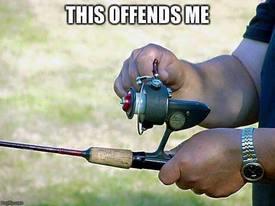Nutrition labels…"Based on a 2,000 calorie diet"...

autumnsquirrel
Posts: 258 Member
Being on My Fitness Pal certainly helps one learn about what they've been eating, that's for sure. I am finding it confusing, though, reading the part where it says "based on a 2, 000 calorie diet"…If my daily intake is 1,600, do I reduce the serving size? Pardon my ignorance, but I know I can always come here for good tips and advice. Thanks for your input:)
0
Replies
-
Being on My Fitness Pal certainly helps one learn about what they've been eating, that's for sure. I am finding it confusing, though, reading the part where it says "based on a 2, 000 calorie diet"…If my daily intake is 1,600, do I reduce the serving size? Pardon my ignorance, but I know I can always come here for good tips and advice. Thanks for your input:)
Don't use the percentage of your daily calorie intake based on the nutrition label. Just go by the total calories per serving, and build that into your total for the day, keeping your deficit intact.0 -
The "based on a 2000 calorie diet" is just so they can give percentages for sodium, vitamins and stuff. It doesn't change how many calories are in a serving. Ignore the percentages and just look at the nutritional info.0
-
This content has been removed.
-
My guess is that MFP tries to make it as easy as possible to track and enter nutritional data. Usually, the labels on food show you the percentage of daily value based on a 2000 cal diet. The labels don't list micrograms, or ppm, etc.0
-
And pay attention if you have a bar code scanner on your device and 'scan' your food to do quick entries while on the fly or entering a new food product. I have discovered a few times that what shows off the bar code scan is a different measurement/amount with calories then the nutrition label on the box. I'm not sure who is responsible for that issue as I don't know if the bar codes are the company who makes the product or the company who sells the product.0
-
some of the micronutrients don't change in their recommendations regardless of total caloric intake though, which is why VLCD and women in particular (due to lower caloric intakes than men on average) can often have trouble getting all their essential micronutrients from their diets.0
-
Thank you for all your replies. I am still hungry at the end of the day, but I needed to reduce my intake from 2000 to 1620 as I stopped losing weight. I would be famished and miserable.0
-
Yes!!:) I have noticed that as well:) Just to be sure, I just look at the labels. Also, I have noticed a few inaccuracies when I search for a food in the database. Someone had entered it incorrectly--glad I caught that or I would have been done eating for the day and it was only lunchtime!!!:)And pay attention if you have a bar code scanner on your device and 'scan' your food to do quick entries while on the fly or entering a new food product. I have discovered a few times that what shows off the bar code scan is a different measurement/amount with calories then the nutrition label on the box. I'm not sure who is responsible for that issue as I don't know if the bar codes are the company who makes the product or the company who sells the product.0 -
And pay attention if you have a bar code scanner on your device and 'scan' your food to do quick entries while on the fly or entering a new food product. I have discovered a few times that what shows off the bar code scan is a different measurement/amount with calories then the nutrition label on the box. I'm not sure who is responsible for that issue as I don't know if the bar codes are the company who makes the product or the company who sells the product.
Most of the bar code scanner apps, like MFP, allow users to add and modify those measurements and amounts.0
This discussion has been closed.
Categories
- All Categories
- 1.4M Health, Wellness and Goals
- 394.8K Introduce Yourself
- 44K Getting Started
- 260.6K Health and Weight Loss
- 176.2K Food and Nutrition
- 47.5K Recipes
- 232.7K Fitness and Exercise
- 444 Sleep, Mindfulness and Overall Wellness
- 6.5K Goal: Maintaining Weight
- 8.6K Goal: Gaining Weight and Body Building
- 153.2K Motivation and Support
- 8.2K Challenges
- 1.3K Debate Club
- 96.4K Chit-Chat
- 2.5K Fun and Games
- 4.1K MyFitnessPal Information
- 16 News and Announcements
- 1.3K Feature Suggestions and Ideas
- 2.8K MyFitnessPal Tech Support Questions





